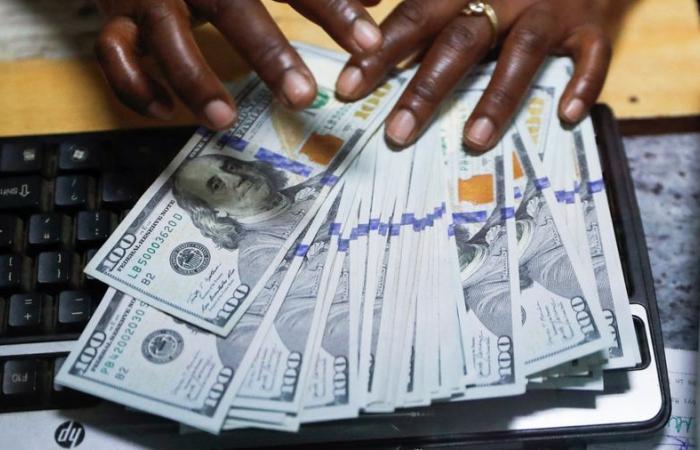The dollar wobbled on Friday, poised for a fourth straight week of declines, as investors scrutinize U.S. data to gauge the pace of interest rate cuts, while China’s round of stimulus keeps risk-sensitive currencies.
Thursday’s data suggests the U.S. labor market remains relatively healthy, while other reports show corporate profits grew at a stronger pace than initially expected in the second quarter, highlighting an optimistic economic outlook.
The dollar, however, remained behind as traders forecast 73 basis points of easing for the rest of the year, with a 51% chance of a further half-percentage-point cut, according to the CME Group’s FedWatch tool.
The Federal Reserve recently signaled it was shifting its focus from inflation to maintaining a healthy labor market, last week making a larger 50 basis point interest rate cut than usual.
The dollar index, which measures the greenback’s value against a basket of currencies including the yen and the euro, stood at 100.67, not far from the 14-month low of 100. 21 which he reached on Wednesday. The index is down 0.06% this week, its fourth consecutive week of decline.
The euro was steady at $1.11687, just below the 14-month high of $1.1214 it touched on Wednesday.
Ryan Brandham, head of global financial markets for North America at Validus Risk Management, said the data indicated the U.S. economy was growing at a healthy pace and that while the job market was slowing, fears of the market of a more radical slowdown could be exaggerated.
“This suggests a more cautious approach to interest rate cuts, favoring a balance between the Fed’s employment mandate and monitoring inflation risks.”
Investors will be watching the Personal Consumption Expenditures Price Index due to be released later this Friday, but analysts do not expect the data to materially change market prices for U.S. rates unless there is a huge error.
Sterling was a little weaker at $1.33975, but remained near the 2-1/2 year high it hit this week as risk appetite was boosted by a series of stimulus measures of China, such as reducing by 50 basis points the amount of cash that banks must hold as reserves.
The risk-sensitive Australian and New Zealand dollars also held near their multi-year highs due to China’s stimulus packages.
The Australian dollar held steady at $0.6889, close to the 18-month high it hit on Wednesday. The kiwi rose to $0.6321, also close to its nine-month high. [AUD/]
China’s leaders on Thursday pledged to support the struggling economy with “forceful” interest rate cuts and adjustments to fiscal and monetary policies, fueling expectations for more stimulus.
The remarks, which included advice to the government to support household consumption and stabilize the struggling property market, were made during an official reading at the monthly meeting of top Communist Party officials, the Politburo.
ING economists said comments from the Politburo meeting confirmed that authorities were shifting gears in their efforts to boost the economy and stabilize confidence.
“Holding the meeting in September rather than waiting for the meeting normally scheduled in December is itself a signal that the authorities are ready to take more urgent steps to achieve the 5% growth target,” they said in a note.
Meanwhile, the yen hit its lowest level in more than three weeks at 145.52 to the dollar in early trade as Japan’s ruling party holds one of the world’s leading leadership contests on Friday. more unpredictable in decades.
Data on Friday showed that core inflation in the Japanese capital met the central bank’s 2% target in September, a sign that the economy is progressing towards meeting the criteria for further rate hikes. ‘interest.






